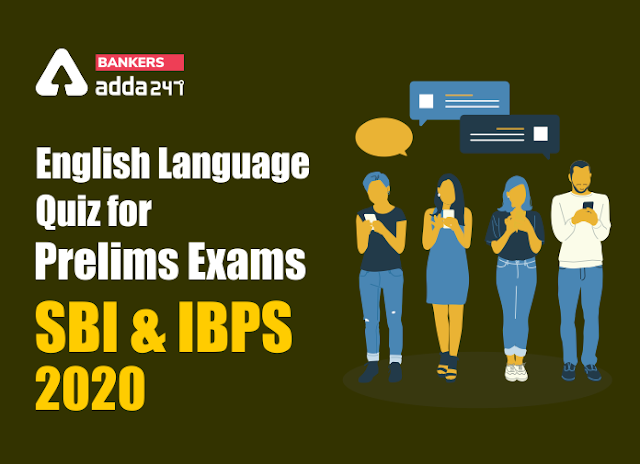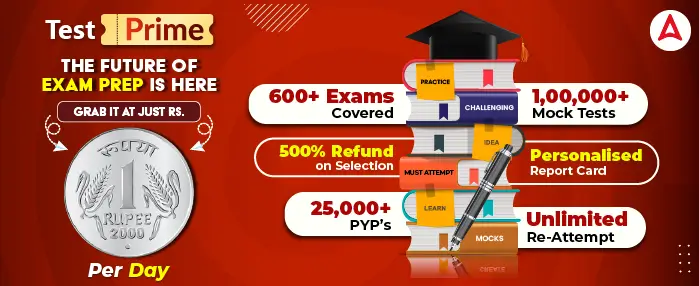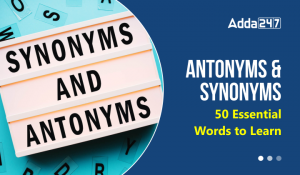Directions (1-10): Read each sentence to find out whether there is any grammatical or idiomatic error in it. The error, if any, will be in one part of the sentence. The number of that part is the answer. If there is ‘No error’, the answer is (e). (Ignore errors of punctuation, if any.)
Q1. One of my friend (a)/ is both a novelist (b)/ and a poet (c)/ of repute (d)/ No error. (e)
(a) A
(b) B
(c) C
(d) D
(e) E
Q2. No sooner he left the office (a)/ than it started (b)/ raining heavily (c)/ to make him completely wet. (d)/ No error. (e)
(a) A
(b) B
(c) C
(d) D
(e) E
Q3. While Xi said China (a)/ was committed to the denuclearisation of (b)/ the Korean peninsula, he did not announce (c)/any new steps to squeeze the reclusive regime(d). No error (e).
(a) A
(b) B
(c) C
(d) D
(e) E
Q4. If one of the candidates choose (a)/ to leave before the examination is over (b)/ allow him (c)/ to do so. (d)/ No error. (e)
(a) A
(b) B
(c) C
(d) D
(e) E
Q5. Whom (a)/ do you plan to invite (b)/ to your party besides (c)/ Mr. Rao and I? (d)/ No error. (e)
(a) A
(b) B
(c) C
(d) D
(e) E
Q6. These vegetables which are grown (a)/ here are (b)/ cheap in (c)/ cost and rich of vitamins. (d)/ No error. (e)
(a) A
(b) B
(c) C
(d) D
(e) E
Q7. A major problem was (a)/ that the Maoists had come (b)/ to power too soon without (c)/ having fully disarmed or demobilised.(d)/ No error. (e)
(a) A
(b) B
(c) C
(d) D
(e) E
Q8. Riots, however did not cease (a)/ to depress him (b)/ and make him to (c)/ turn to non- violence (d)/ No error. (e)
(a) A
(b) B
(c) C
(d) D
(e) E
Q9. I often wonder to whom (a)/ a nation (b)/ owes its greatest (c)/ debt of gratitude. (d)/ No error.(e)
(a) A
(b) B
(c) C
(d) D
(e) E
Q10. Pressed by his students (a)/ the principal suddenly said (b)/ that he was in no way (c)/ responsible for the quarrel. (d)/ No error. (e)
(a) A
(b) B
(c) C
(d) D
(e) E
Directions (11-15): Read each sentence, divided into four parts, to find out whether there is any grammatical or idiomatic error in it. The error, if any, will be in one part of the sentence. Below each sentence you are provided with five options. The first three options suggest you the possible sequences of the correct parts of the sentence. Choose the sequence which consists of correct parts of the sentence. If there is no error in the sentence, choose option (d). If none of the options gives the correct sequence and if there is indeed an error in some part of the sentence, choose (e) as your option.
Q11. Much water(a)/ has flown (b)/under (c)/ this bridge. (d)/No Error. (e).
(a) acd
(b) bcd
(c) abd
(d) No error
(e) None of these.
Q12. The driver said that a hundred (a)/ kilometers is, after all, a short distance (b) / which he could cover in half an hour (c) / or in forty-five minutes (d) / No Error (e).
(a) bcd
(b) acd
(c) abc
(d) No error
(e) None of these.
Q13. He tried (a) / to open (b)/ the can (c) / through a can opener. (d) / No Error (e).
(a) abd
(b) bcd
(c) acd
(d) No error
(e) None of these.
Q14. You and I (a) / am going to (b)/ take part in the (c) / meeting tomorrow. (d) / No Error (e).
(a) abc
(b) acd
(c) bcd
(d) No error
(e) None of these.
Q15. When the students reached late (a) / the teacher objected their (b)/ entering the class (c) / without his permission. (d) / No Error (e)
(a) abd
(b) acd
(c) bcd
(d) No error
(e) None of these.
Practice More Questions of English for Competitive Exams:
Solutions
S1. Ans. (a)
Sol. Use ‘friends’ in place of ‘friend’ as after ‘one of’, ‘either of’, neither of’, ‘every one of’, noun or pronoun is always plural but verb is always singular.
Ex. One of the books is new.
S2. Ans. (a)
Sol. ‘had’ will be used after ‘No sooner’ or ‘No sooner did he leave’ will be used as sentence starting from ‘No sooner’, supporting verb is used before the subject.
Ex. No sooner did he reach the office than his friend arrived.
S3. Ans. (e)
Sol. There is no error in the statement.
S4. Ans. (a)
Sol. Use ‘chooses’ in place of ‘choose’ because noun or pronoun is used as plural after ‘one of’ but verb is always used as singular.
S5. Ans. (d)
Sol. ‘me’ will be used in place of ‘I’ as pronoun used after preposition is always in objective case.
Ex. He likes Ram besides you and me.
S6. Ans. (d)
Sol. Use ‘in’ place of ‘of’ as ‘rich in’ means ‘having much’.
S7. Ans. (e)
Sol. The sentence is grammatically correct.
S8. Ans. (c)
Sol. ‘to’ will not be used as ‘Subject + make + object + V1’ is used.
Ex. I made him laugh. (Active)
He was made to laugh. (Passive)
S9. Ans. (e)
Sol. No error
S10. Ans. (e)
Sol. The sentence is grammatically correct.
S11. Ans. (a)
Sol. The error is in part (b) of the sentence.
‘flowed’ will be used in place of ‘flown’ as the V3 of ‘flow’ is ‘flowed’.
S12. Ans. (b)
Sol. The error is in part (b) of the sentence.
‘was’ will be used in place of ‘is’ as the sentence is in past tense ‘said’.
S13. Ans. (e)
Sol. The error is in part (d) of the sentence. Therefore none of these is the correct choice. Use ‘with’ in place of ‘through’ as ‘with’ is used before ‘instrument/ tool’.
Ex. A snake was killed by him.
The paper was cut with scissors.
S14. Ans. (b)
Sol. The error is in part (b) of the sentence.
‘are’ will be used in place of ‘am’ because when two pronouns is connected with ‘and’ then plural verb is used.
Ex. You and I are working for him.
He and she are husband and wife.
S15. Ans. (b)
Sol. The error is in part (b) of the sentence.
Preposition ‘to’ is used after ‘objected’ as when ‘object’ is used in the form of ‘verb’ to express the meaning as ‘to protest/ mind/ demur’, then preposition ‘to’ is used after that.
Practice with Crash Course and Online Test Series for IBPS Clerk Prelims:



 English Language Notes for Competitive E...
English Language Notes for Competitive E...








